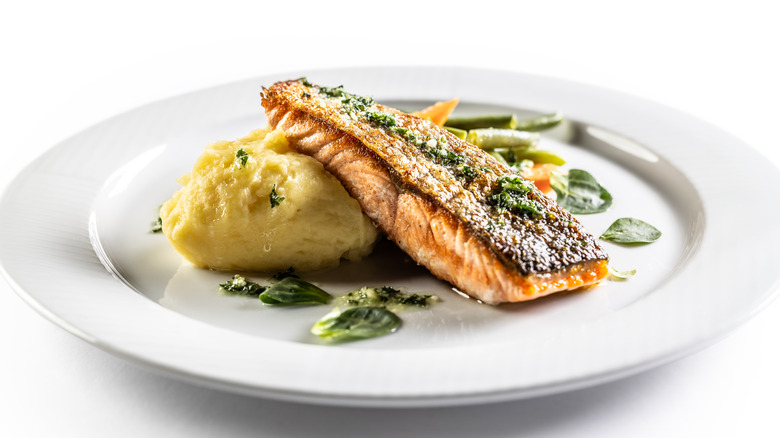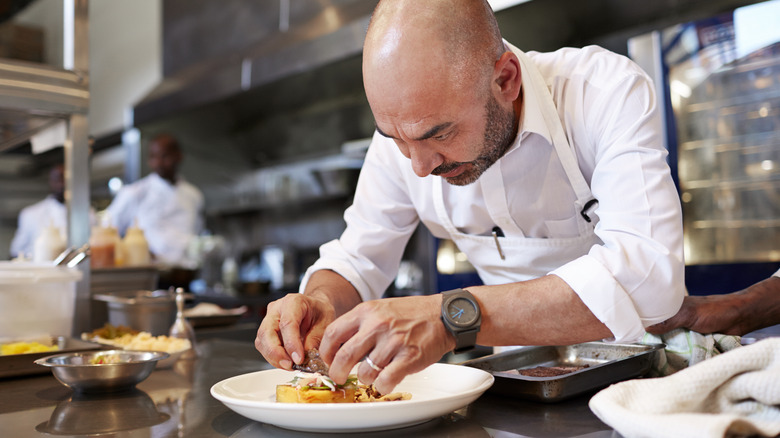How Plate Color Can Affect The Presentation Of Your Food
Shopping for dinner plates sounds simple, but it can actually be a little daunting. From choosing a size, to selecting a pattern and material, there is a dizzying amount of choices — not to mention how often design trends change. Perhaps the most important decision of all, however, is color, because it can really affect the presentation of your food. To make the most of your dinnerware dollar, we spoke to Richard Sandoval, the visionary behind Richard Sandoval Hospitality, who explained exclusively to Food Republic that the color of the plate sets the tone for how the food is perceived. The safest bet, and one which you might notice is used in millions of restaurants around the world, is classic white. "White plates are versatile, providing contrast and making colors pop," said the chef, restaurateur, and cookbook author, who often showcases his dishes on Instagram and Facebook, where he has more than 55,000 followers combined.
Ina Garten never hosts a dinner party with anything other than simple white plates, because she feels that different colors and patterns can distract from the food. If you only have a small amount of space, or a small budget for dishes (or both), a set of white plates with a classic round shape will never go out of style and look good for any occasion.
Use different color plates to match the mood of the dish
There is no rule that says you can only use white plates for serving food, of course. Otherwise, why would there be so many styles of dishes out there? Even restaurants have multiple colors, shapes, and styles of tableware to show off different dishes. Richard Sandoval says that some colors are better for certain cuisines. "Black plates add drama but work best with vibrant dishes," he noted in our exclusive chat. "Earth-toned plates suit rustic, natural presentations like Latin or farm-to-table dishes."
Of course you can choose any color or pattern of plate that makes you happy, but don't feel like you need to limit yourself to only one set of plates. It's nice to have a couple of choices if you can afford them and have the storage space in your kitchen. Second-hand dishes are easy to find if you want to experiment, and estate sales and restaurant closings are excellent places to find pieces. Just make sure to steer clear of any vintage dinnerware with toxic red flags, such as advanced age, which might have unsafe levels of lead or uranium.
If you're not sure how your food looks on a certain plate, try taking a photo of it with your phone to see if the plate is helping or hurting the presentation. If you learn to take better food photos, you can get a better sense of how the right plate can make your food look amazing.


